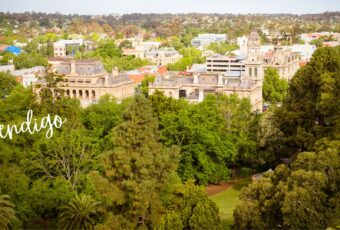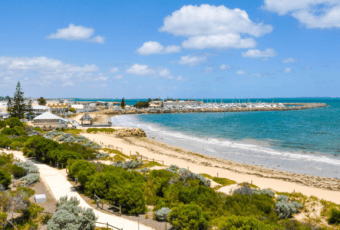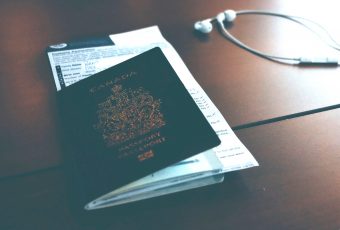
Understanding Physiotherapy Licensing: How to Practice Physiotherapy in Canada
In Canada, you must have a license to call yourself a physical therapist or a physiotherapist—often abbreviated to PT or PHT. A license to practice physiotherapy is issued by organizations (regulatory colleges or regulators) in each province or territory.
The Canadian Alliance of Physiotherapy Regulators (CAPR) assists internationally trained physiotherapists to get their Canadian licenses. They work on behalf of provinces who provide the license to practice (except Quebec, which has its own process).
Australia is world-renowned for its leading-edge physiotherapy research and practice. At Australian universities, physiotherapy is a strong academic and clinical discipline, and Australian research in physiotherapy drives teaching and learning. This provides Australia’s physiotherapy students with opportunities to be educated in contemporary, evidence-based clinical practice.
With such amazing programs, it’s no wonder that Australian graduate-entry physiotherapy degrees are highly sought after by Canadian university graduates with academic backgrounds in kinesiology, health sciences and human kinetics.

What’s the Process?
Let’s say you’ve studied a CAPR-recognized physiotherapy degree in Australia, and now you’d like to use your degree in Canada.
Now what?
After you’ve completed your Australian physiotherapy degree, you’ll have 4 stages to become a licensed physio in Canada:
- Stage 1: Complete the “Context of Physiotherapy in Canada” Course
- Stage 2: Review of Your Credentials
- Stage 3: Physiotherapy Competency Exam (PCE)
- Stage 4: Apply for Provincial Licensure
Stage 1: Complete the “Context of Physiotherapy in Canada” Course
After you’ve completed your degree, you must first complete the online course, “The Context of Physiotherapy in Canada.” This can be completed online before leaving Australia and must be done before you apply to CAPR to have your credentials reviewed.
Stage 2: Review of Your Credentials
Applicants who are educated in Australia and are either registered to practice or are eligible to be registered to practice without restriction qualify for the new Pre-Approved Credentialling Pathway (PACP).
Stage 3: Physiotherapy Competency Exam (PCE)
The PCE is a computer-based, 200-question, multiple-choice exam available in both French and English. The PCE includes the following subjects:
- Taking a client’s history
- Conducting a physical examination
- Data interpretation
- Clinical problem solving
- Treatment techniques
- Ethics
- Safety
- Interviewing
- Communication
The exam also covers the following areas of practice:
- Musculoskeletal
- Neurological
- Cardiovascular-respiratory
Passing the PCE tells the CAPR that you meet the minimum standards to practice in Canada and that your patients will receive safe treatments. Visit the CAPR’s website to see Written Component practice questions.
Stage #4: Applying for Provincial Licensure
After successfully completing the Written Component of the PCE, you must contact your provincial regulator to learn more about requirements to become fully licensed. This may include an assessment of your clinical skills.
Former OzTREKK Student Explains How to Prepare for the PCE
Australian physiotherapy school graduate, Alexis, decided to take a study course offered by Canada’s Physical Therapy Development Institute. It was helpful given that what she learned in Australia will help you become an exceptional physiotherapist, but it won’t necessarily help you pass the CAPR exam.
The additional study course helped Alexis understand the ins and outs of CAPR’s judging criteria and from there she could use a combination of what she learned in the classroom and what she knew CAPR was looking for to succeed.
Hear more about this from Alexis herself in this clip:
How did it all end? She’s now a practicing physiotherapist in Ontario!
FAQs About Studying Physiotherapy
How much does the credentialling process cost?
Visit the CAPR cost estimator for details about what to expect.
How long does it typically take after graduation to start practicing physiotherapy?
The process can take up to two years depending on the timing of the exams; however, in most provinces, you are permitted to work under supervision between the written and clinical portions of the PCE exam (the exception is BC). Get more information about the process on our Practicing physiotherapy in Canada page.
Australian Physiotherapy Degrees
Australian physiotherapy degrees are highly sought after by Canadian university graduates with academic backgrounds in kinesiology, health sciences and human kinetics. Canadians enjoy learning from Australian academics who are world leaders in the physiotherapy field.
The Master of Physiotherapy (MPT), Doctor of Physiotherapy (DPT), and Bachelor of Physiotherapy programs that OzTREKK features are designed to produce qualified, highly skilled physiotherapists who will be eligible to write the exam to practice physiotherapy in Canada.
OzTREKK Physiotherapy Eligibility Pre-assessment
Are you thinking of applying to a physiotherapy program, but not sure where to start? We can help!
If you’re wondering if you’re eligible—and if you’re competitive—start by sending us your university transcripts. Together, we can cut right through to your best options. Send us a PDF of your unofficial transcripts (must be clear, legible, and have course titles) and we’ll be able process your application(s) much faster.
*



































Ask A Question
Ask us about your program of interest, or if you have a question about our services.
CONTACT US TODAY